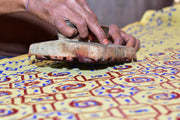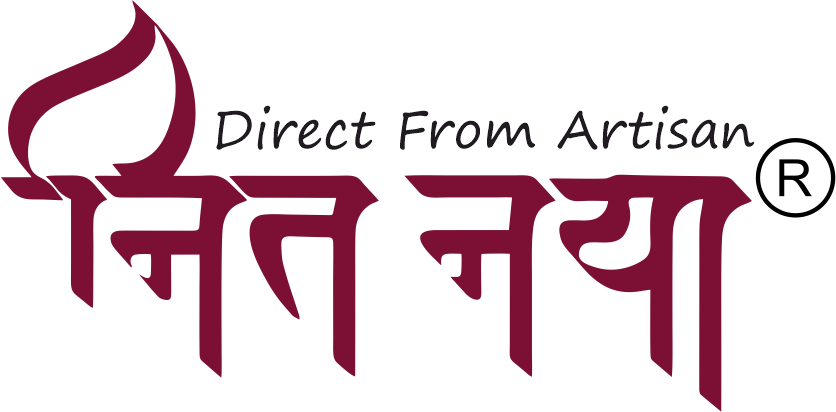
In the realm of textile arts, few traditions hold as much cultural significance and timeless beauty as Ajrakh hand block printing. Originating from the Kutch region of Gujarat, India, Ajrakh printing has a history that spans over centuries, embodying the skill, artistry, and cultural heritage of its artisans. Let's delve into the intricate world of Ajrakh hand block printing, exploring its techniques, motifs, and enduring appeal.
History and Origins:
The roots of Ajrakh printing can be traced back to the ancient civilizations of the Indus Valley, where evidence of similar block printing techniques has been found. Over time, this art form evolved and flourished, becoming deeply intertwined with the cultural fabric of Gujarat. The term "Ajrakh" itself is derived from the Arabic word for "blue," reflecting the prominence of indigo dye in traditional Ajrakh designs.
Techniques and Process:
Ajrakh hand block printing is a labor-intensive craft that requires precision, skill, and patience. The process begins with the preparation of the fabric, usually cotton or silk, which is washed, soaked in a solution of alum and clay, and dried multiple times to ensure it's ready for dyeing. The fabric is then printed with intricate hand-carved wooden blocks using natural dyes derived from plants and minerals. The characteristic motifs of Ajrakh, such as geometric patterns, floral designs, and repetitive motifs, are meticulously stamped onto the fabric, layer by layer, with each color requiring its own block and printing process. The final step involves washing and treating the fabric to set the colors and enhance their vibrancy, resulting in a masterpiece of textile art.
Symbolism and Motifs:
Ajrakh designs are not merely decorative; they are imbued with symbolic meaning and cultural significance. Many motifs found in Ajrakh printing are inspired by elements of nature, such as plants, animals, and geometric shapes, each carrying its own symbolism. For example, the tree of life motif represents fertility and prosperity, while the repetitive geometric patterns symbolize harmony and unity. These motifs not only beautify the fabric but also convey deeper messages and cultural narratives, connecting the wearer to their heritage and traditions.
Contemporary Relevance:
While Ajrakh hand block printing has deep roots in tradition, it continues to evolve and adapt to contemporary tastes and trends. Today, artisans are experimenting with new color palettes, designs, and techniques while staying true to the essence of the craft. Additionally, the growing appreciation for sustainable and eco-friendly practices has led to a resurgence of interest in natural dyeing methods, further enhancing the appeal of Ajrakh textiles in a global market.
Conclusion:
In a world dominated by mass production and fast fashion, Ajrakh hand block printing stands as a testament to the enduring power of tradition, craftsmanship, and cultural heritage. From its ancient origins to its contemporary relevance, Ajrakh continues to captivate and inspire with its timeless beauty and symbolic richness. As we celebrate this remarkable art form, let us honor the skilled artisans who keep the legacy of Ajrakh alive, ensuring that its vibrant colors and intricate patterns continue to adorn the fabric of our lives for generations to come.







